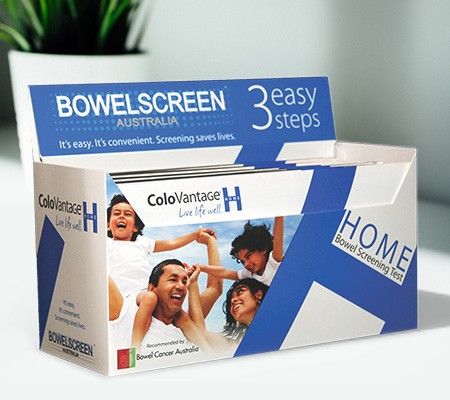After you have been on a low fibre diet for a while you may find that you need to increase your fibre intake.
As your symptoms improve after surgery and your bowel motions normalise you may be able to start reintroducing some of your favourite foods. Do this slowly and add one new food at half a cup at a time so you can identify any foods that cause bowel upset.
Some important points
If you experience constipation or any sign of blockage – not opening your bowels for two to three days, please contact your specialist or healthcare professional.
You may have reintroduced medium fibre foods too quickly and may need to go back onto a low fibre diet.
If you experience extremely loose watery bowel motions and leakage, pain or fever please contact your specialist or healthcare professional.
Medium fibre diets may be suitable for diabetics, please discuss this with your healthcare professional.
| Tips for managing your bowel
Write a food diary. Some foods may make your symptoms worse. Everybody is different, therefore only you can tell what aggravates your symptoms. Writing a food diary helps you to identify what foods make your bowel work better or worse.
Eat normally and try to keep your weight stable. This is particularly important if you are undergoing treatment.
If you are losing weight drink some protein drinks in between meals with a milk of your choice, you can add a little psyllium husk or slippery elm powder to make your drink thicker.
Lactose intolerance may persist beyond surgery in some people, a food diary will help you determine this or speak to your health care professional. Lactose is found in dairy products such as milk, cheese, yoghurt and ice cream and some processed and packaged foods.
Make sure you have plenty of water. Aim for 6-8 cups of water a day, if you like some flavour in water enjoy some sliced fruit in water to infuse some healthy sugars.
Introducing a wider range and variety of foods may mean you do not need a multivitamin supplement. Check with your health care professional.
Foods will not need to be peeled; however, seeds and pips may still be an issue for your bowel. If you are writing a food diary you should be able to recognise if they are not suitable. Fruit and vegetables may be able to be consumed raw, cooked or lightly steamed.
Gently add small amounts - one to two teaspoons of crushed whole nuts, coconuts, seeds, you may be able to eat less tender pieces of meat, chicken, and introduce whole mushrooms, wholemeal foods, and fruit with peel, and celery. You may also be able to add vegetables with stalks.
NOTE: if you experience bowel upset revert to the low fibre diet again for a few days to settle your bowel
Talk to a health care professional if you are experiencing any soreness internally or externally.
You can slowly add more Psyllium husk or Metamucil daily to drinks and foods to ensure a well formed and completely evacuated bowel motion. This is a fibre and would need to be introduced slowly to avoid constipation, remembering to increase water intake at the same time.
Once your bowel has settled after a few weeks to months you may at some stage slowly move to a high fibre diet one food at a time.
This is a sample menu guide please ensure you read our Modifiable Bowel Cancer Risk Factors on the website to ensure you are eating within the World Cancer Research Fund guidelines to modify bowel cancer risk.
You can eat most fruit and vegetables and other lower fibre foods, however, aim to add at least two to three cups of medium fibre foods suggested per day.
Breakfast - choose one of the following
• ½ cup of Carman’s original muesli with milk of choice, topped with sliced banana, or fresh fruit such as pear, apple or peach, pear or berries
• Slice or two of wholemeal sourdough or ordinary wholemeal bread and spread of your choice with two poached eggs with ¼ cup of fresh wilted baby spinach
• Two egg omelette with a sprinkle of cheese and ¼ avocado with toasted wholemeal bread and spread of choice
• Serving 40 grams dry weight of rolled oats cooked with mixed berries made in the microwave or in a saucepan. Cook until the oats have swollen and doubled in size – add more water if necessary, add a large tablespoon of fruit yoghurt.
• Two slices of wholemeal bread (3 grams fibre) with spread of choice and two teaspoons of crunchy peanut butter fresh apple
• Silken tofu 100 grams scrambled in a fry pan (with olive oil) with a teaspoon of fresh chives, chopped spinach on sourdough wholemeal bread
• Slice or two of wholemeal sourdough or ordinary wholemeal bread and spread of your choice with two poached eggs with ¼ cup of fresh wilted baby spinach
• Two egg omelette with a sprinkle of cheese and ¼ avocado with toasted wholemeal bread and spread of choice
• Serving 40 grams dry weight of rolled oats cooked with mixed berries made in the microwave or in a saucepan. Cook until the oats have swollen and doubled in size – add more water if necessary, add a large tablespoon of fruit yoghurt.
• Two slices of wholemeal bread (3 grams fibre) with spread of choice and two teaspoons of crunchy peanut butter fresh apple
• Silken tofu 100 grams scrambled in a fry pan (with olive oil) with a teaspoon of fresh chives, chopped spinach on sourdough wholemeal bread
Lunch - choose one of the following
• Wholemeal bread wrap with sliced chicken, seeded mustard, sliced Lebanese cucumber and a slice of cheese. Follow with a pear
• Crusty wholemeal sourdough bread with a tin of tuna or salmon and a vegetable soup made from peeled cauliflower, pumpkin, carrot, green bean, sweet potato with 2 teaspoons of tomato paste, chicken stock –blended with half a cup of brown lentils
• Brown basmati rice with butter chicken, with a ¼ cup side of cooked green beans
• Stir fried vegetables, ¼ cup green beans, ¼ cup carrot, ¼ cup zucchini, garlic powder, salt and pepper to season, with a ¼ BBQ chicken skin off, multigrain rice crackers with spread of choice
• Quorn sausage wrapped in a wholemeal bread wrap or wholemeal mountain bread with low salt tomato sauce and a cup of mixed leaf lettuce
• Crusty wholemeal sourdough bread with a tin of tuna or salmon and a vegetable soup made from peeled cauliflower, pumpkin, carrot, green bean, sweet potato with 2 teaspoons of tomato paste, chicken stock –blended with half a cup of brown lentils
• Brown basmati rice with butter chicken, with a ¼ cup side of cooked green beans
• Stir fried vegetables, ¼ cup green beans, ¼ cup carrot, ¼ cup zucchini, garlic powder, salt and pepper to season, with a ¼ BBQ chicken skin off, multigrain rice crackers with spread of choice
• Quorn sausage wrapped in a wholemeal bread wrap or wholemeal mountain bread with low salt tomato sauce and a cup of mixed leaf lettuce
Dinner - choose one of the following
• Poached white fish sprinkled with ginger powder and teaspoon of fresh chives, salt and pepper to flavour, baked pumpkin and potato with fresh asparagus
• Lamb or beef minute steak or minced meat cooked (100 grams) with baked potato, ½ cup of steamed carrots, 2 cup green beans
• Stir fry chicken or tofu strips with ½ cup of snow peas and tablespoon of bamboo shoots add a dash of soy sauce, serve with brown basmati rice
• Sliced eggplant, layered with spaghetti Bolognese meat with sauce, with wholemeal lasagna sheets and bake. Serve with salad of ½ cup of lettuce leaves with sliced onion and grated fresh carrot
• Soup made of pureed vegetables (pumpkin, sweet potato, potato, carrot, green beans, English spinach with a chicken/beef stock cube) with poached fresh white fish and slice of wholemeal sourdough bread with spread of choice
• Lamb or beef minute steak or minced meat cooked (100 grams) with baked potato, ½ cup of steamed carrots, 2 cup green beans
• Stir fry chicken or tofu strips with ½ cup of snow peas and tablespoon of bamboo shoots add a dash of soy sauce, serve with brown basmati rice
• Sliced eggplant, layered with spaghetti Bolognese meat with sauce, with wholemeal lasagna sheets and bake. Serve with salad of ½ cup of lettuce leaves with sliced onion and grated fresh carrot
• Soup made of pureed vegetables (pumpkin, sweet potato, potato, carrot, green beans, English spinach with a chicken/beef stock cube) with poached fresh white fish and slice of wholemeal sourdough bread with spread of choice
Snacks - choose one of the following
• Brown rice cakes one with cheese of choice
• Brown rice crackers with hard cheese
• Brown rice crackers with crème cheese and chives
• Wholemeal or water crackers with Tofutti
• Apple with tablespoon of crunchy peanut butter
• Fruit salad, with fresh or frozen berries, chopped apple and fresh grapes
• Smoothie with milk of choice, teaspoon of chocolate powder and whey or protein powder, fresh banana and a teaspoon psyllium husks and tablespoon of vanilla or fruit yoghurt well blended
• Four squares of dark chocolate
• Fruit yoghurt with fresh fruit from list
• Dark chocolate with added nuts (4 squares)
• Dark chocolate (4 squares)
• Brown rice crackers with hard cheese
• Brown rice crackers with crème cheese and chives
• Wholemeal or water crackers with Tofutti
• Apple with tablespoon of crunchy peanut butter
• Fruit salad, with fresh or frozen berries, chopped apple and fresh grapes
• Smoothie with milk of choice, teaspoon of chocolate powder and whey or protein powder, fresh banana and a teaspoon psyllium husks and tablespoon of vanilla or fruit yoghurt well blended
• Four squares of dark chocolate
• Fruit yoghurt with fresh fruit from list
• Dark chocolate with added nuts (4 squares)
• Dark chocolate (4 squares)
You can eat most fruit and vegetables and other lower fibre foods, however, aim to add at least two to three cups of medium fibre foods suggested per day.
NOTE: while the amount of vegetables and fruit are limited in a low fibre diet they are not limited in a medium fibre diet - tougher vegetables and skin left on is suitable.
Meat and meat alternatives
Generally, do not contain fibre ensure they are consumed with vegetables or salad
- All meats, eggs, poultry, seafood, egg, protein supplements with no fibre. Note : Beef, kangaroo, lamb and deli cuts (minimise and consume less than 500 grams per week to reduce bowel cancer risk)
- Vegetarian proteins, Quorn 1 sausage or 50 grams of other Quorn foods, tofu, protein supplement with fibre
Milk and dairy alternatives – generally little to no fibre
-
Soymilk, tofu, Tofutti, rice milk, oat milk, almond milk, lactose free milk, goat, sheep, camel, cow if tolerated, condensed milk, coconut milk, macadamia milk.
-
Cream, cream cheese, cottage cheese, cheddar, ricotta, ice – cream, chia pudding (higher fibre content) , tapioca pudding, tofu ice cream (with fruit), fruit ice cream bars, sorbet, crème fraiche, crème brulée, custard, Mascarpone, yoghurt/ yoghurt drinks without fruit, coconut cream/ coconut water
Grains and breads
- Wholemeal bread, sourdough wholemeal bread, white fibre enriched bread, wholemeal bagel, wholemeal muffin, wholemeal pita bread, wholemeal dinner roll, wholemeal rice crackers, wholemeal crackers, wholemeal crumpets wholemeal scones, wholemeal naan
- Brown rice, brown basmati rice, wholemeal pasta
Cereals
- Swiss muesli, Nutrigrain Protein, Special K with fruit and nuts, porridge rolled oats, wheat biscuits
Beans and legumes
- Lentils may be tolerated
Fruit
- Fresh apple and pear
- Nashi pear
- Peaches
- Apricots
- Mango
- Peeled nectarine
- Peeled plum
- Peeled paw paw or papaya
- Pineapple peeled
- Cherries 10
- Banana
- Mandarin
- Tangarine
- Orange
- Lychees
- Strawberries, blueberries or raspberries
- Fruit juice with pulp
Vegetables
- Mixed lettuce leaves
- Mushroom
- Celery
- Choko
- Lebanese cucumber
- Bok choy
- Eggplant
- Snow peas
- Shredded white or red radish
- Asparagus
- English spinach
- Green beans
- Carrot
- Cauliflower florets
- Green broccoli
- Broccolini
- Chinese cabbage
- Beetroot
- Tomato
- Capsicums
- Pumpkin, sweet potato, yam, taro
- Fennel
- Swede
- Endive
- Mulberries
- Rhubarb
- Cabbage savoy
- Butter bean
- Lima bean
- Seedless grapes
- Rocket
- Water chestnuts
- Eggplant with skin
Nuts
- Peanut, cashew and Macadamia nuts, almonds with no skin
Assorted
- Potato chips, soya chips, corn chips, wholemeal rice crackers
- Wholemeal biscuits, marmalade, fruit jam, crunchy peanut butter, hulled tahini
- Soups ready made vegetable, minestrone, pumpkin, chicken and vegetable (aim for soups with vegetables or read labels for fibre content)
Disclaimer: The above is intended as a guide and are suggestions. They are not tailored to individual needs or intolerances and are based on product nutritional guides by the manufacturers or Australian Food Composition Database (January 2019). Weights and measures of food and reactions may vary in individuals. For tailored advice please contact your health care provider.











